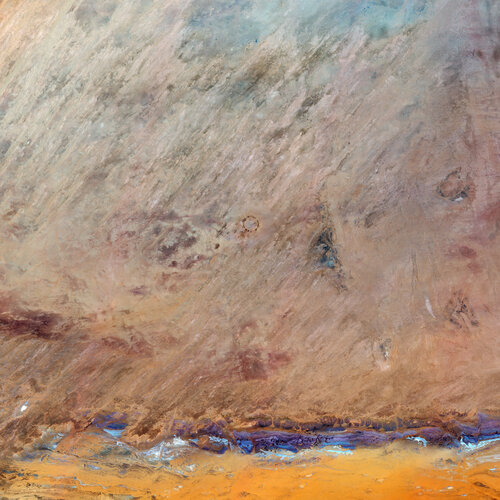
Copernical Team
Rover The Moon
 In the fall of 2023, a U.S. rover will land at the south pole of the moon. Its mission: to explore the water ice that scientists know lurks within the lunar shadows, and which they believe could help sustain humans who may one day explore the moon or use it as a launching pad for more distant space exploration.
NASA recently selected Kevin Lewis, an associate professor in the Krieger Schoo
In the fall of 2023, a U.S. rover will land at the south pole of the moon. Its mission: to explore the water ice that scientists know lurks within the lunar shadows, and which they believe could help sustain humans who may one day explore the moon or use it as a launching pad for more distant space exploration.
NASA recently selected Kevin Lewis, an associate professor in the Krieger Schoo NASA program brings big benefits to Big Ten School
 When Indiana University (IU) introduced the NASA Technology Transfer University (T2U) program at its Kelley School of Business last fall, it became the first university in the Big Ten to do so.
T2U connects universities with NASA technology, giving students the opportunity to work with federal government research and innovations. "Our goal is to inspire young entrepreneurs by bringing real
When Indiana University (IU) introduced the NASA Technology Transfer University (T2U) program at its Kelley School of Business last fall, it became the first university in the Big Ten to do so.
T2U connects universities with NASA technology, giving students the opportunity to work with federal government research and innovations. "Our goal is to inspire young entrepreneurs by bringing real Relativity and Oneweb sign multi-launch agreement for Terran R
 Relativity Space has signed a multi-year, multi-launch Launch Services Agreement (LSA) with OneWeb, the global space-based communications company. Under the agreement, Relativity will launch OneWeb's low Earth orbit (LEO) satellites on Terran R, the first fully reusable and entirely 3D printed rocket, starting in 2025. These launches will support OneWeb's deployment of its Gen 2 satellite networ
Relativity Space has signed a multi-year, multi-launch Launch Services Agreement (LSA) with OneWeb, the global space-based communications company. Under the agreement, Relativity will launch OneWeb's low Earth orbit (LEO) satellites on Terran R, the first fully reusable and entirely 3D printed rocket, starting in 2025. These launches will support OneWeb's deployment of its Gen 2 satellite networ Rocket Lab's Lunar Photon completes 6th orbital raise preps for final Earth-escape burn
 Rocket Lab USA, Inc. (Nasdaq: RKLB) has confirmed its Photon Lunar spacecraft successfully completed a sixth on-orbit burn of the HyperCurie engine, bringing the CAPSTONE satellite closer to the Moon.
Lunar Photon's apogee - the point at which the spacecraft is farthest from Earth during its orbit - is now 43,297 miles (69,680 km).
This sixth burn was originally scheduled to be two b
Rocket Lab USA, Inc. (Nasdaq: RKLB) has confirmed its Photon Lunar spacecraft successfully completed a sixth on-orbit burn of the HyperCurie engine, bringing the CAPSTONE satellite closer to the Moon.
Lunar Photon's apogee - the point at which the spacecraft is farthest from Earth during its orbit - is now 43,297 miles (69,680 km).
This sixth burn was originally scheduled to be two b NASA, SpaceX target new launch date for commercial cargo mission
 NASA and SpaceX now are targeting no earlier than Thursday, July 14, for launch of the CRS-25 commercial resupply services mission to the International Space Station.
The new target launch date supports ongoing Dragon spacecraft inspections as well as repair and replacement of any components that could have degraded by exposure to mono-methyl hydrazine (MMH) vapor found during testing in e
NASA and SpaceX now are targeting no earlier than Thursday, July 14, for launch of the CRS-25 commercial resupply services mission to the International Space Station.
The new target launch date supports ongoing Dragon spacecraft inspections as well as repair and replacement of any components that could have degraded by exposure to mono-methyl hydrazine (MMH) vapor found during testing in e Bacteria for blastoff: Using microbes to make supercharged new rocket fuel
 Converting petroleum into fuels involves crude chemistry first invented by humans in the 1800s. Meanwhile, bacteria have been producing carbon-based energy molecules for billions of years. Which do you think is better at the job?
Well aware of the advantages biology has to offer, a group of biofuel experts led by Lawrence Berkeley National Laboratory (Berkeley Lab) took inspiration from an
Converting petroleum into fuels involves crude chemistry first invented by humans in the 1800s. Meanwhile, bacteria have been producing carbon-based energy molecules for billions of years. Which do you think is better at the job?
Well aware of the advantages biology has to offer, a group of biofuel experts led by Lawrence Berkeley National Laboratory (Berkeley Lab) took inspiration from an Virgin Orbit mission success brings UK launch another step closer
 Virgin Orbit's next satellite launch will take place from the UK, following the success of the "Straight Up" mission, which lifted off from Mojave in California earlier (Saturday 2nd July 2022). Science Minister George Freeman and the UK Space Agency welcomed the news that Virgin Orbit has successfully completed its fourth mission from California, and its first night launch (10.50pm in Californi
Virgin Orbit's next satellite launch will take place from the UK, following the success of the "Straight Up" mission, which lifted off from Mojave in California earlier (Saturday 2nd July 2022). Science Minister George Freeman and the UK Space Agency welcomed the news that Virgin Orbit has successfully completed its fourth mission from California, and its first night launch (10.50pm in Californi The Fingertip Galaxy: Reflecting Euclid in art
 Video:
00:04:21
Video:
00:04:21
“After Euclid’s lifetime, it will just be floating in space. What if future beings found Euclid? How would they know anything about the humanity of the people?” – Tom Kitching, lead scientist of Euclid’s VIS instrument.
The team behind ESA’s Euclid mission has come together to create something special – a personal and collective galaxy-shaped fingerprint painting that has been attached to the spacecraft ready to launch into space. The collaborative nature of the artwork reflects the collaborative nature of the Euclid project overall; in both cases, people have come together to build something unique.
The Fingertip Galaxy was
Ibuprofen tablets with flavor added survive better in space

Ibuprofen tablets modified to survive in space have returned to Earth and shown that those with added flavor survived better with less degradation than those with no added taste.
Researchers from the International Flavor Research Center at the University of Nottingham worked with the University of Adelaide on the research that also showed that an iron oxide coating formed during tablet manufacture could protect Ibuprofen.
"Medicines taken on space missions are exposed to cosmic rays which limit their 'space shelf life' and can even lead to the formation of toxic substances as the drug content declines," said the University of Adelaide's Professor Volker Hessel, Research Director of the Andy Thomas Center for Space Resources and Professor in the School of Chemical Engineering and Advanced Materials who led the project to send tablets into space.
"We have tested and proven countermeasures to the degrading effects of cosmic rays by sending ibuprofen tablets made in our laboratory to the International Space Station (ISS) for six months and checking them on their return.
"Four of the six ibuprofen tablets from outside the ISS, each made with a distinct formulation and protection concept, significantly decomposed to a high number of ibuprofen fragments.
Week in images: 27 June - 1 July 2022

Week in images: 27 June - 1 July 2022
Discover our week through the lens
